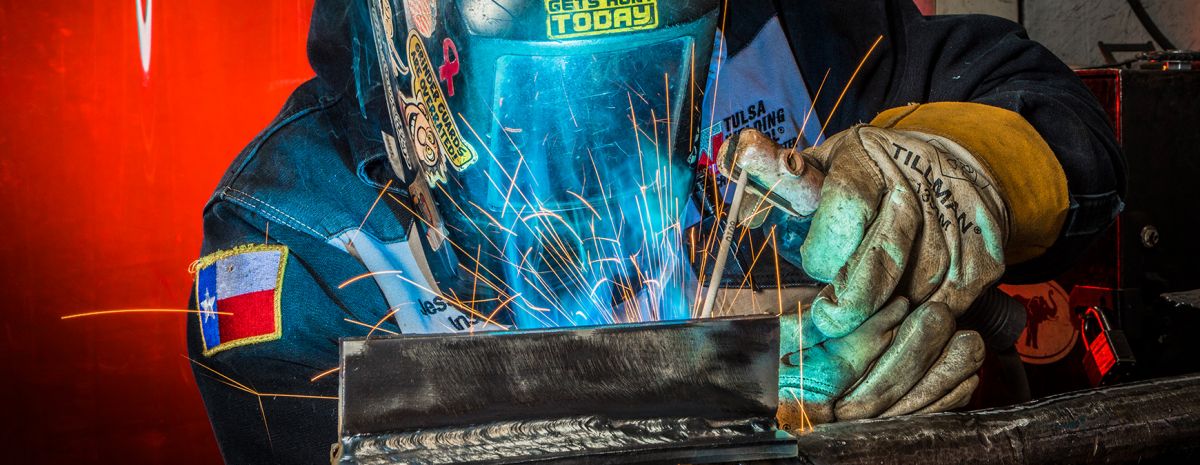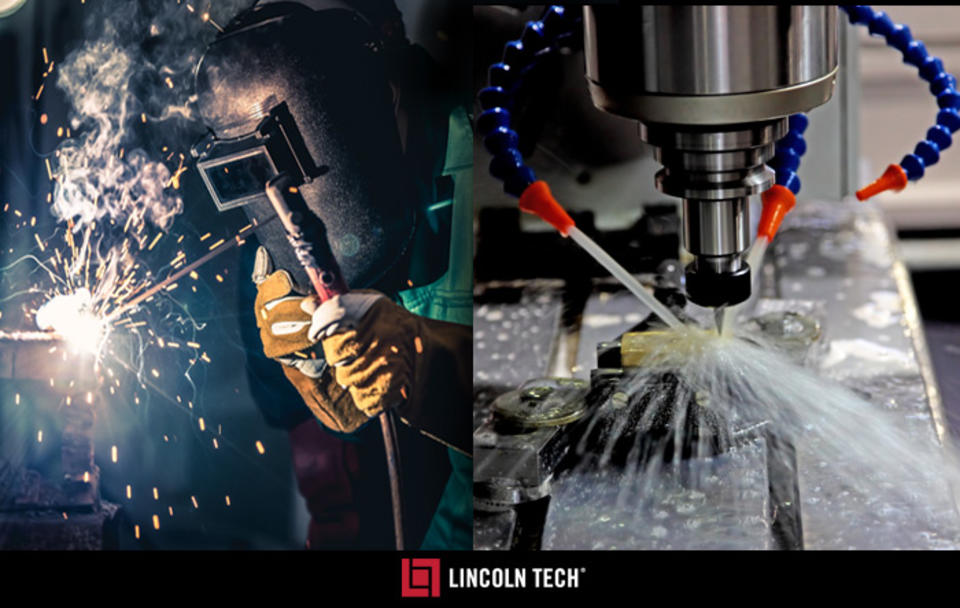Typical Welding Repair Service Issues and How to Address Them Effectively
Welding fixings frequently experience a series of problems that can jeopardize the honesty of the last item. Typical problems consist of inadequate infiltration, porosity, and imbalance, to name a few. Each defect provides distinct obstacles that call for details strategies for resolution. Understanding these concerns is essential for welders intending to enhance their skills and outcomes. This discussion will certainly check out these common welding repair work issues and effective methods to resolve them.
Poor Infiltration
Inadequate infiltration takes place when the weld steel stops working to totally fuse with the base material, leading to weak joints and prospective structural failures. This issue often comes from not enough heat input, wrong electrode angle, or inappropriate welding speed. Welders might come across insufficient penetration as a result of a miscalculation of the necessary specifications for a specific product density or type. Additionally, contamination on the base product's surface area can prevent effective bonding, exacerbating the problem. To address poor infiltration, welders ought to assure appropriate setups on their equipment and preserve a tidy work surface. Regular inspection of welds is suggested to determine any shortages early, permitting prompt modifications and the avoidance of compromised structural honesty in welded assemblies.
Porosity
Porosity is an usual problem in welded joints that shows up as little gas bubbles entraped within the weld metal. This flaw can endanger the honesty of the weld, resulting in minimized toughness and prospective failure under anxiety. Montana Mobile Welding and Repair Belgrade. Porosity commonly arises from contamination, dampness, or inappropriate welding strategies, which permit gases to leave into the molten weld pool. To address porosity, welders must assure correct surface preparation, preserve a clean working environment, and utilize suitable welding specifications. Furthermore, choosing the right filler product and protecting gas can reduce gas entrapment. Routine assessment and testing of welds can aid recognize porosity early, assuring prompt restorative actions are taken, consequently preserving the quality and integrity of the bonded framework
Imbalance
Misalignment in welding can occur from different elements, consisting of inappropriate setup and thermal expansion. Understanding the source is crucial for effective resolution. Numerous adjustment techniques are readily available to realign parts and assure structural honesty.
Causes of Misalignment
Welding imbalance usually originates from a selection of underlying problems that can compromise architectural stability. One primary reason is improper fit-up of parts before welding, which can result in voids and irregular surface areas. Variations in thermal growth during the welding process can additionally result in distortion, specifically if the products being joined have different coefficients of expansion. In addition, insufficient securing and fixturing may fail to hold parts firmly in area, resulting in motion during welding. Poorly kept tools, including welding machines and devices, may introduce incongruities in the weld bead, further adding to misalignment. Operator error, stemming from not enough training or experience, can also play a significant duty in developing misaligned welds.

Adjustment Techniques Readily Available
Resolving imbalance efficiently requires a mix of corrective techniques customized to the specific concerns available. One common approach is making use of fixtures or jigs to hold components in the proper setting throughout welding, ensuring constant positioning. Furthermore, preheating the products can help in reducing distortion and enhance fit-up. For significant misalignment, mechanical adjustment techniques, such as utilizing hydraulic jacks or clamps, can be used to deal with the setting before welding. Post-weld heat treatment may additionally be needed to eliminate tensions created by imbalance. Ultimately, careful assessment and change during the arrangement stage can stop imbalance concerns from coming to be significant issues, advertising a smoother welding process and boosting general structural integrity.
Distortion
Distortion is a common obstacle in welding that can occur from numerous factors, including unequal heating and cooling. Understanding the causes of distortion is crucial for applying efficient prevention strategies. Resolving this issue not just boosts architectural integrity but likewise enhances the general quality of the weld.
Reasons of Distortion
When subjected to the intense heat of welding, products typically go through adjustments that can result in distortion. This sensation mainly arises from thermal growth and contraction throughout the welding process. As the weld area warms up, the product increases; upon air conditioning, it contracts, which can produce internal stresses. On top of that, uneven heating throughout a work surface can aggravate these tensions, resulting in warping or bending. The kind of material also plays a significant duty; metals with differing thermal conductivity and coefficients of expansion may react differently, causing uncertain distortions. In addition, poor joint style and inadequate fixturing can add to misalignment throughout welding, increasing the likelihood of distortion. Comprehending these reasons is crucial for effective welding repair service and prevention techniques.
Avoidance Techniques
Reliable avoidance strategies for distortion during welding focus on regulating heat input and making certain appropriate joint layout. Maintaining a consistent warmth input assists to minimize thermal expansion and tightening, which can bring about distortion. Using methods such as preheating the workpiece can also reduce the temperature gradient, advertising consistent home heating. Additionally, selecting suitable joint layouts, such as T-joints or lap joints, can boost security and decrease tension concentrations. Carrying out correct fixturing to secure the helpful site work surfaces in location additionally help in preserving placement throughout the welding process. Ultimately, staggered welding series can disperse heat much more uniformly, avoiding localized distortion. By using these methods, welders can significantly decrease the probability of distortion and boost the total quality of their welds.
Breaking
Cracking is a common issue run into in welding fixings, often arising from various variables this contact form such as inappropriate air conditioning prices, product option, or poor joint prep work. The incident of fractures can greatly compromise the stability of the weld, causing possible failings during operation. To resolve this concern, welders should initially analyze the root causes, guaranteeing that products work and appropriately picked for the specific application. Furthermore, managing the air conditioning rate during the welding process is essential; quick cooling can generate stress and result in cracking. Appropriate joint layout and preparation also add to minimizing the danger. Implementing these methods can boost weld high quality and longevity, ultimately reducing the chance of breaking in finished weldments.

Insufficient Fusion
A substantial concern in welding fixings is insufficient fusion, which happens when the weld metal does not sufficiently bond with the base product or previous weld passes - Belgrade Welding. This flaw can cause weaknesses in the joint, possibly jeopardizing the integrity of the welded structure. Variables adding to incomplete blend include inadequate warmth input, incorrect welding technique, and contamination of the surface areas being signed up with. To address this problem properly, welders must assure proper pre-weld cleaning and surface area preparation, in addition to change their welding parameters to achieve appropriate penetration and blend. Routine assessment during the welding process can likewise aid recognize insufficient fusion early, enabling timely rehabilitative steps to improve the general high quality of the weld
Overheating
While welding fixings can enhance structural honesty, overheating presents a significant difficulty that can apa itu welder bring about material deterioration. Extreme warm during welding can modify the mechanical buildings of steels, causing lowered stamina, raised brittleness, and bending. This sensation is particularly vital in high-stress applications where structural dependability is critical. Identifying overheating can entail visual evaluations for staining or distortion, in addition to keeping track of temperature level throughout the welding procedure. To alleviate the dangers connected with overheating, welders ought to use appropriate strategies, such as controlling warm input, changing traveling rate, and making use of appropriate filler materials. Additionally, executing pre- and post-weld warmth therapies can assist restore material residential or commercial properties and improve the overall top quality of the repair work, ensuring long-lasting performance and security.
Often Asked Inquiries
What Are the Usual Signs of a Welding Problem?

How Can I Test My Welds for Top quality?
To evaluate welds for top quality, one can make use of aesthetic inspections, ultrasonic screening, and radiographic techniques. Each technique ensures structural integrity, determines flaws, and confirms adherence to specified criteria, eventually enhancing the integrity of the welded joints.
What Safety and security Precautions Should I Take While Welding?
When welding, one ought to prioritize security by wearing suitable individual safety equipment, ensuring correct air flow, safeguarding combustible materials away, preserving a tidy workspace, and recognizing surroundings to prevent mishaps and injuries.
Can I Fix a Weld Without Redoing the Entire Joint?
Repairing a weld without remodeling the entire joint is feasible, depending on the damages (Belgrade). Methods such as grinding, including filler product, or using a welding procedure can effectively deal with specific problems while preserving the bordering structure
What Tools Are Essential for Reliable Welding Fixes?
Important devices for effective welding repair work consist of a welding machine, cord brush, grinder, safety equipment, clamps, and filler materials. Each tool plays a crucial function in ensuring high quality and security during the fixing procedure. Porosity generally arises from contamination, moisture, or improper welding methods, which enable gases to escape right into the molten weld swimming pool. Inadequately kept devices, including welding devices and devices, might present variances in the weld grain, more contributing to imbalance. When subjected to the intense warmth of welding, materials frequently undertake modifications that can lead to distortion. Cracking is a common concern experienced in welding repair services, usually resulting from numerous variables such as inappropriate air conditioning rates, material selection, or poor joint prep work. A significant concern in welding repair work is insufficient blend, which takes place when the weld steel does not adequately bond with the base material or previous weld passes.